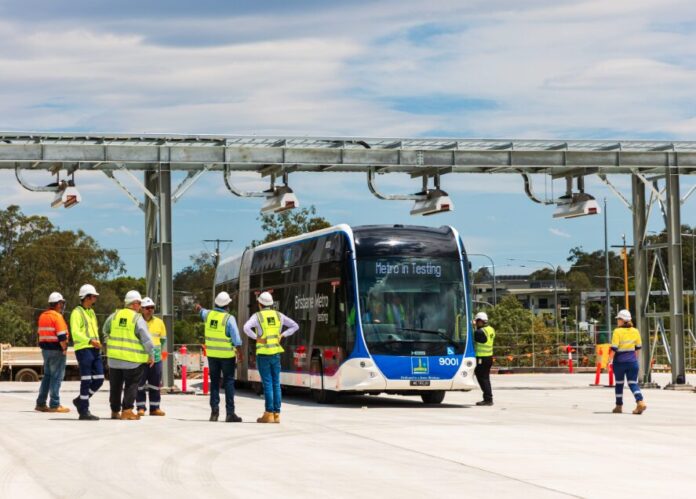Brisbane City Council has unveiled plans to boost the city’s public transport capacity by 41 million seats over the next eight years.
The Council says new analysis has revealed the additional seats that could be added to the network every year under a proposed expansion of Brisbane Metro to 22 new stations as outlined in Lord Mayor, Adrian Schrinner’s Race to Gold: Brisbane’s Games Transport Legacy.
This is in addition to Metro 1 from Roma Street to Eight Mile Plains and Metro 2 from UQ to RBWH which will boost capacity by an extra 30 million seats every year.
“Brisbane Metro is the future of bus rapid transit and we’re keen to expand it even further to ease congestion and keep Brisbane moving,” said Lord Mayor Schrinner.
“A Brisbane Games has always been about delivering a positive legacy for our city.
“Brisbane’s incredible growth means better public transport must be a priority today, during the Games and beyond.
“We’re already making that step change from public transport to mass transit with the introduction of Brisbane Metro services along our existing busway network,” he said.
The proposed expansion would extend the Brisbane Metro bus rapid transit system north to Carseldine, south to Springwood, east to Capalaba and out to Brisbane Airport.
The Brisbane Metro expansion would connect key Games precincts to a network of bus rapid transit services, including:
- the Sleeman Sports Complex in Chandler
- the Belmont Rifle Range
- the Capalaba business district, close to the planned Redland Whitewater Rafting Centre
- the planned Northshore Hamilton athlete’s village
There are 18 anticipated Olympic and Paralympic venues across Brisbane, with a target of 90% of trips to venues to be taken by public and active transport.
During the Sydney 2000 and London 2012 Olympic and Paralympic Games, overall public transport patronage increased by almost one million trips per day.
However, Brisbane’s current public transport system can only serve about 50% of projected trips to and from Games venues.
Brisbane’s bus fleet carried about 71 million passengers last financial year.

With the city’s rapid population growth, the current public transport network is no longer fit for purpose, says Lord Mayor Schrinner.
He said Brisbane Metro’s Bus rapid transit routes will be critical to the city’s transport future given it is no longer practical or affordable to build above-ground heavy rail routes through the city’s suburbs.
The Queensland Government and Brisbane City Council have jointly written to the Federal Government seeking support to progress a rapid business case using existing City Deal funding.
“The expansion of Brisbane Metro to Carseldine, Capalaba, Springwood and out to the airport is the logical next step to helping people travel around our city sooner and safer,” said Lord Mayor Schrinner.
“Premier Crisafulli has been a long-time supporter of Brisbane Metro and we’ll continue working closely to help people get around Brisbane sooner and safer.
“I’m confident with all three levels of government on board we can deliver a lasting transport legacy that benefits Brisbane and the rest of Queensland.”
An ongoing partnership between all levels of government is critical to deliver the Brisbane Metro expansion ahead of Brisbane 2032, he said.


